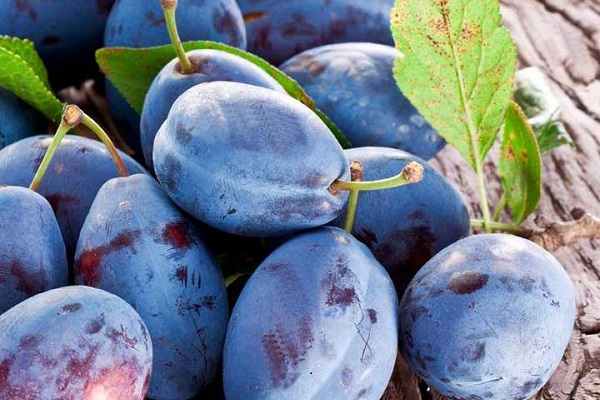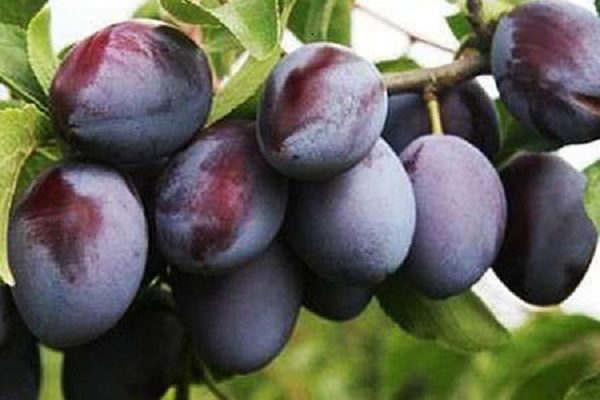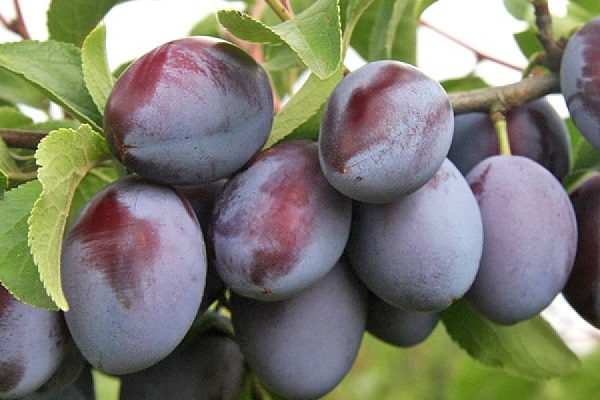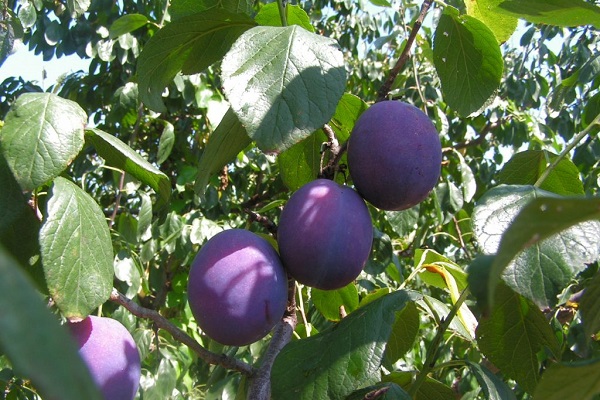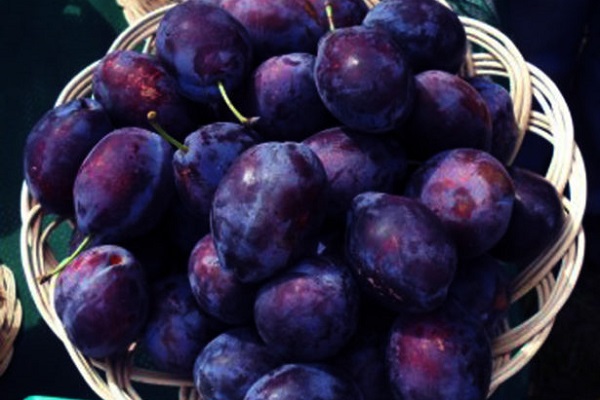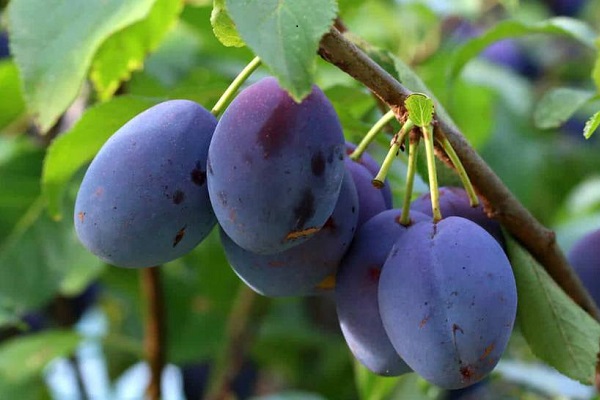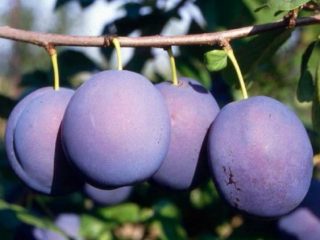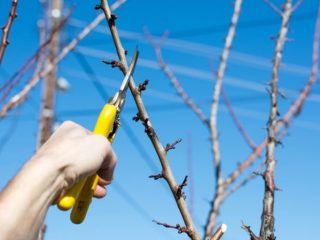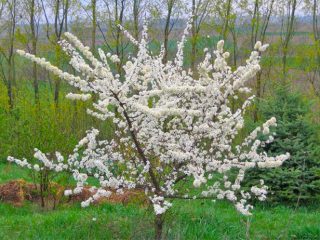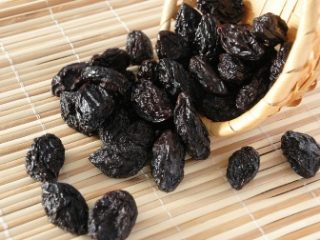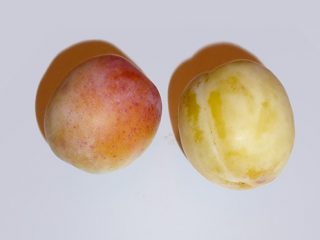Content
Hungarian plum is one of the most popular and widespread varieties due to its excellent taste. Experienced gardeners choose this particular variety because they consider it unpretentious and fruitful.
History of variety selection
The plum was created in the 20th century by Hungarian gardeners and at first was cultivated exclusively in Hungary. It is this fact that explains the origin of the name plum. The Hungarian variety has been growing in Russia recently, but has already achieved popularity among many experienced gardeners and amateurs.
Description of Hungarian plum varieties
Most Vengers are self-fertile and do not require additional pollinators. The height of the tree is about 5–6 m. The crown is characterized by the shape of an oval or an elongated pyramid. Reddish shoots are characterized by durability and rapid growth.The Hungarian plum tolerates drought and frost well, and is not susceptible to dangerous diseases characteristic of the crop.
The main feature of plums is their high sugar content, density and minimal amount of dry matter. The small fruit has a lilac or violet hue and a characteristic shape of an ellipse pointed at the edges. The juicy and sweet pulp has a yellowish tint. The variety is suitable for cultivation in regions with temperate climatic conditions.
Korneevskaya
The result of selection of Volgograd and Bogatyr plums. It received its name in honor of R.V. Korneev, who made a huge contribution to the creation of the hybrid. Pollinators of the Vengerka Korneevskaya plum are Skorospelka and Ozymaya Krasnaya, but their presence is not necessary due to the possibility of self-pollination.
Description of the plum variety Vengerka Korneevskaya: large juicy fruits of 35 g each, dark brown skin color, tasty amber pulp, short fruiting period and high yield. The winter hardiness of the Vengerka Korneevskaya plum is high, but proper care is required due to poor resistance to certain diseases. The height of the Vengerka Korneevskaya plum tree is average, the crown is branched and elongated.
Moscow
Hungarian plum Moscow (Tsaritsynskaya) is one of the first varieties. It was created in 1947 by European breeders and is intended for areas with temperate climatic conditions. Tasting rating of Moscow Hungarian plum: 4.3.
The main feature is increased resistance to frost and disease. The tree can withstand temperatures down to -30 degrees. The variety produces rich harvests with pleasant taste. Perfect for preserving food for the winter, as well as for long-term transportation.Pollinators of the Hungarian Moscow plum are Skorospelka Krasnaya, Michurinskaya and Persikovaya. They will significantly increase productivity and fruiting.
Belarusian
The Hungarian Belorussian plum is the result of the work of Belarusian breeders who cross-pollinated the seedlings of the Delicate plum and Stanley in 2009. It has a moderate height, a wide crown, and the fruits are characterized by large sizes and a sweet and sour taste. The variety is resistant to various diseases and is able to quickly recover after frost.
Donetsk
The Hungarian Donetsk plum was bred by a branch of the Donetsk Institute of Horticulture. Its main characteristics are its height, spreading crown and average life expectancy. The fruit has a dense dark skin and juicy amber pulp.
Of all the varieties in this group, the Donetskaya early plum ripens earlier than other varieties due to its good resistance to frost. It is important to know that dry sandy soil is absolutely not suitable for growing the crop, and the groundwater level when planting the Vengerka Donetskaya plum should be at its maximum. Italian and Analta can be used as a pollinator.
Pulkovskaya
It is found in the Leningrad region and is the result of folk selection, and the description of the Hungarian Pulkovskaya plum differs slightly from the Moscow plum. A tall tree with a spreading cylindrical crown. The fruits are small, purple in color with small red spots. The pale yellow pulp has a distinctive taste. An excellent option for homemade preparations for the winter.
It tolerates frosty and dry climates well, and is rarely susceptible to diseases inherent in the culture. To increase the yield by 5 times, you can use pollinators: Moskovskaya, Skorospelka and Ozymaya.
Voronezh
The Hungarian Voronezh plum is common in the south of Russia due to the most suitable climatic conditions. Compact tree with large purple fruits. Because of its sour taste and good density of pulp, it is often used for preparing preparations for the winter. Plum needs pollinators, which are suitable varieties Renklod and Michurinskaya.
Michurinskaya
The Hungarian Michurinskaya variety is characterized by rapid ripening and good yield. Its demand is explained by its good resistance to frost. The fruit is small in size, with sugary, juicy green pulp and a small seed. The variety is self-fertile.
Yellow
The Hungarian Yellow variety is widespread throughout Russia and is named due to the presence of juicy yellowish pulp. The tree is resistant to frosty and dry climates. Does not require additional pollinators to improve crop quality.
Italian
The most famous Hungarian variety. It is distinguished by the dimensions of the tree and large fruits, which perfectly tolerate long-term storage and transportation. It is cultivated in the southern regions of Russia. It is not resistant to diseases and droughts, so it needs timely watering. The Hungarian Italian plum belongs to the self-fertile varieties. But to improve productivity, you can plant other Hungarian varieties nearby.
Early
Grows in warm regions of Russia. It is distinguished by increased productivity and excellent taste properties of plums. The plant is very sensitive to strong weather changes and requires preventive work against pests. Does not require pollinators, but if desired, you can plant Anna Shpet or Altana.
Monastyrskaya
The Hungarian Monastyrskaya variety is widespread in all regions due to its unpretentiousness to the growing environment. It is characterized by increased frost resistance. The tree is spreading and tall, and the fruit is large and juicy. This Hungarian variety is self-fertile and long-lived.
Bogatyrskaya
In one of the Lower Volga institutes, by crossing the Gigantic and Domashnyaya plums, they obtained a unique variety, which, due to the large number of large fruits, was named Hungarian Bogatyrskaya, although the tree itself is not tall. It is resistant to weather changes and diseases. For fruiting it does not require planting pollinator varieties.
Ural
This Vengerka plum was bred in the Urals, at the Sverdlovsk horticulture breeding station. The tree is low, sparse, and the oval, juicy fruits are large in size. Productivity is high and fruiting is regular. The Hungarian Uralskaya variety is frost-resistant and self-fertile.
Azhanskaya
The birthplace of the early Hungarian Azhan plum is France. The height of the tree is 4.5–5 m. The fruits are large, with thick skin and juicy greenish pulp. The Hungarian variety is not resistant to sudden changes in weather and is often susceptible to diseases. For productivity, it is worth planting the Renklod variety nearby.
Dubovskaya
The Vengerka Dubovskaya variety is rarely found in Russia, mainly in the Volgograd region, where it was bred. Valued for its good immunity to disease and resistance to frost. Small juicy fruits have an oval shape. For a rich harvest, you need to choose the right pollinator, for example, Anna Shpet or Volgogradskaya.
New
The Hungarian Nova plum is characteristic of the North Caucasus due to its excellent recovery after prolonged drought and frost.The tree is of moderate growth, the yield is average, and the fruits are of high quality and uniform in shape and size. Often affected by diseases and moths. Plum does not require pollinators.
Zarechnaya
The variety is known for its good yield, pleasant taste and resistance to sudden climate changes. The Vengerka Zarechnaya plum grows throughout Russia. Large bluish fruits are formed already in early July. The culture is self-fertile.
Homemade (Ordinary)
The Hungarian Domestic plum (Ordinary, Ugorka or Moldavian) is common in regions of Russia with a warm, temperate climate, since it does not tolerate severe cold. Grows well in the Kursk and Voronezh regions. The tree is massive, spreading, and the juicy, sweet fruits are small in size. Caring for the Ugorka plum is required to obtain a good harvest. If possible, Italian or Altana should be used as a pollinator.
Wangenheim
Better than all other plum varieties, Hungarian Wangenheim tolerates cold, thanks to which it can be cultivated throughout Russia and other countries. It has a pleasant, delicate taste of fruit and a small seed. Does not require pollination.
Oposhnyanskaya
The Hungarian plum Oposhnyanskaya comes from Ukraine, where it is widely grown. It is distinguished by loose, sugary pulp and small seeds. Characterized by high yield and long shelf life. Plum prefers warmer soils as it does not tolerate extreme cold. The culture is self-fertile.
Landing Features
Planting plums is a very important event, on which the quality and quantity of the harvest depends. It should be treated with special attention and caution, having studied all the advice of experienced gardeners.
Recommended timing
In the spring, there is a chance that the plum will not take root, so planting should be done at the end of summer. Ideal timing is between the third ten days of August and the beginning of September.
Choosing a suitable location
To grow Hungarian plum, it is recommended to choose a sunny place on the top, since a lot of moisture and cold air accumulate in the lowlands. The area should be well heated and protected from drafts. The main features of the soil are looseness, nutritional value and the absence of an acidic environment.
What crops can and cannot be planted nearby?
A suitable pollinator with the same flowering time will be an excellent neighbor for the Hungarian plum. It is not recommended to plant berry bushes next to the tree, as they can interfere with the growth and development of germinating shoots.
Selection and preparation of planting material
When choosing a plum seedling, you should pay attention to its appearance. There should be no symptoms of disease, lichen, or dry leaves or broken branches.
Landing algorithm
Before planting the Hungarian plum variety, you must carefully study the sequence of the process, which consists of several stages:
- Choose the ideal plum seedlings and the optimal place for their growth.
- Dig holes 70 cm deep at a distance of 3–7 meters from each other.
- Place the plum seedling so that the root collar remains 3–5 cm above the ground.
- Cover with fertile soil mixed with 250 g of supersulfate solution and 1 bucket of peat or humus.
- To ensure that the soil is well compacted, water using 3 buckets of water.
Caring for Hungarian plum
The first years of a plum's life are characterized by rapid growth of the crown, so regular pruning is necessary. With its help, gardeners simulate the appearance of a tree and the load on its skeletal part. It is recommended to treat the cut areas after trimming with a special solution.
The Hungarian plum variety tolerates winter well if properly prepared for the cold. In the fall, you need to wrap the root collar with sphagnum and whiten the trunk. And also before the onset of frost, you should mulch the tree trunk circle - this is also a good method of protection against rodents if you use coarser material. When the first snow falls, you need to carefully compact it around the plum.
The root system of the Hungarian plum does not grow deeply, so it needs abundant watering. It is necessary to regularly check the soil moisture around the tree and, if necessary, add 5 buckets of water at a time. When fruits are forming, the amount of liquid must be increased by at least a third. You can refuse fertilizing in the first year, but in the second year you need to apply nitrogen fertilizers. Mature plums that are already bearing fruit require the addition of superphosphate and growth stimulants.
Diseases and pests, methods of control and prevention
An important part of caring for the Hungarian plum is protecting it from diseases and pests with the help of effective chemicals and performing mandatory agricultural practices. To do this, you need to know what dangers are characteristic of the culture and how to deal with them.
| Disease | Symptoms | Prevention | Treatment | |
| Black nodularity | Swellings appear on young branches, which over time become denser and crack. This leads to the dying and drying out of branches. | Spray before new leaves begin to form with Bordeaux mixture (1%) or similar substitutes. | Cut and burn the affected parts of the plant, disinfect the cuts with copper sulfate (1%), apply oil paint. | |
| Hole spot | A large number of small red spots appear on the leaves, in place of which holes form. The leaves and shoots dry out, and the fruits become deformed. | Water moderately and get rid of weed. | Spray the plant with Bordeaux solution (1%) or XOM. Before and after flowering. If the disease continues to progress, repeat the procedure after harvesting. | |
| Rust | The formation of yellow spots on the leaf blades, which are covered with a brown coating on the reverse side. Later they dry out and fall off. | Remove weeds and loosen the soil. | Carry out 2-3 treatments with Bordeaux solution (1%) with an interval of 10 days. | |
| Pest | Prevention | Mary fight | ||
| codling moth | Remove weeds and loosen the soil. | Treat the tree with insecticides, and collect and burn the fallen shoots. | ||
| Gypsy moth | Promptly prune branches and treat the trunk. | Collect eggs and caterpillars by hand. Treat the crop with chemical or natural preparations. | ||
To preserve the orchard, it is necessary to regularly inspect it for the presence of pests and disease symptoms and promptly eliminate the problem.
Conclusion
Hungarian plum is a reliable and proven variety that will bring a rich harvest even after a frosty winter. The crop will delight you for a long time with its tasty and high-quality fruits if all recommendations for planting and care are followed.

